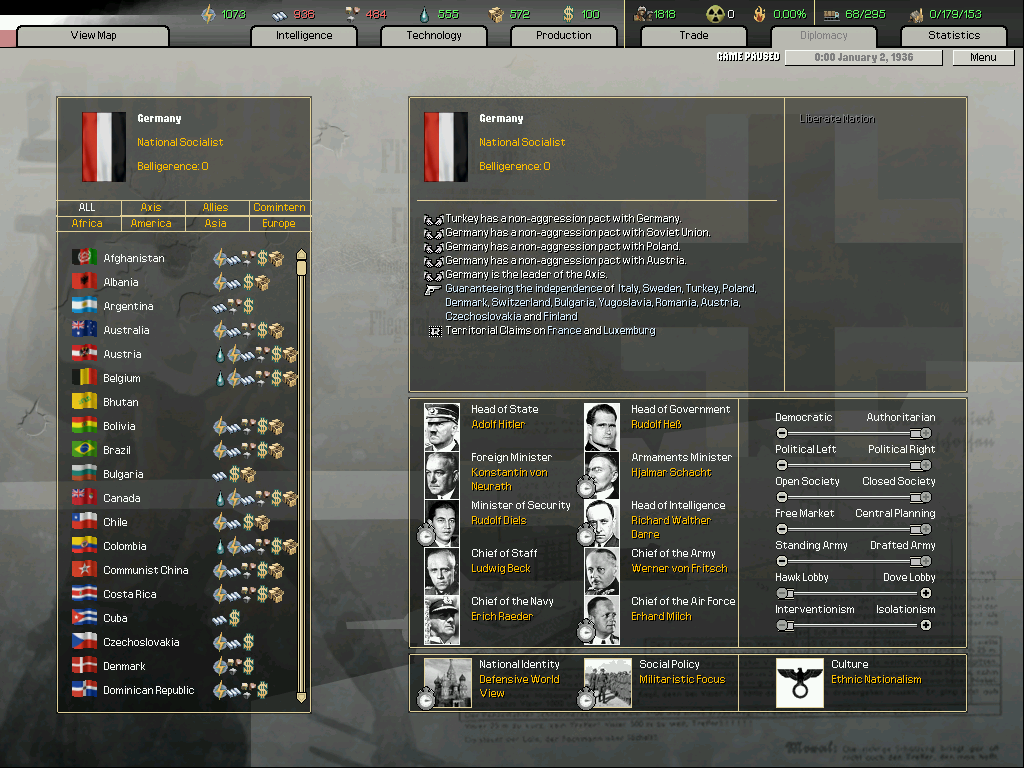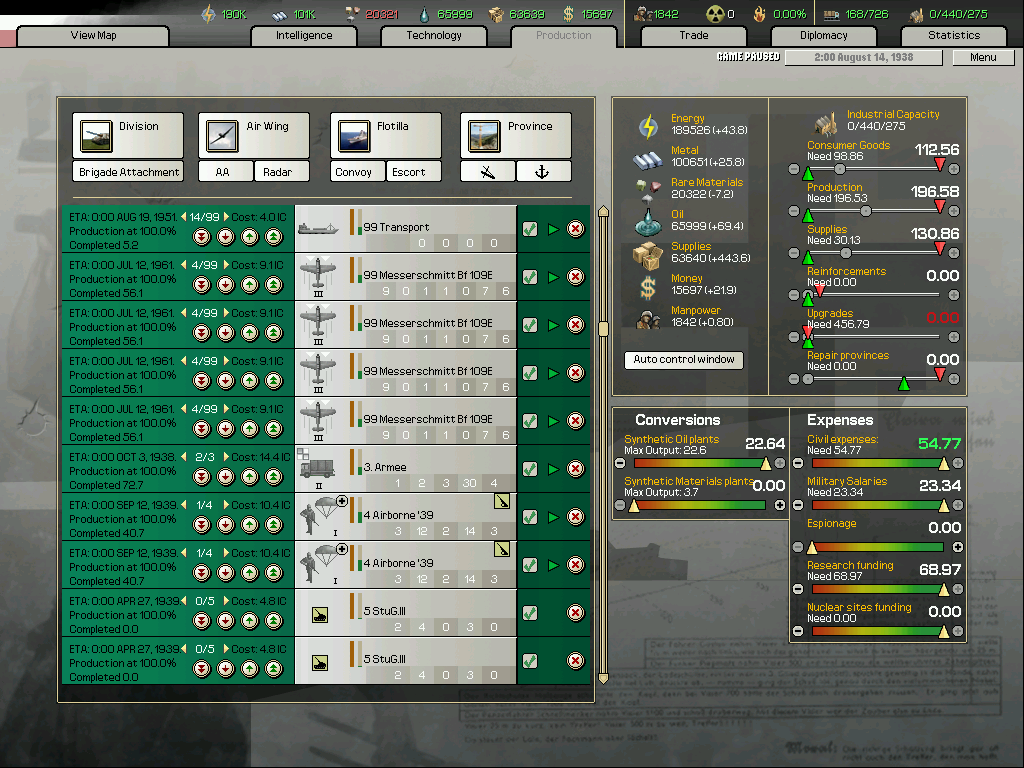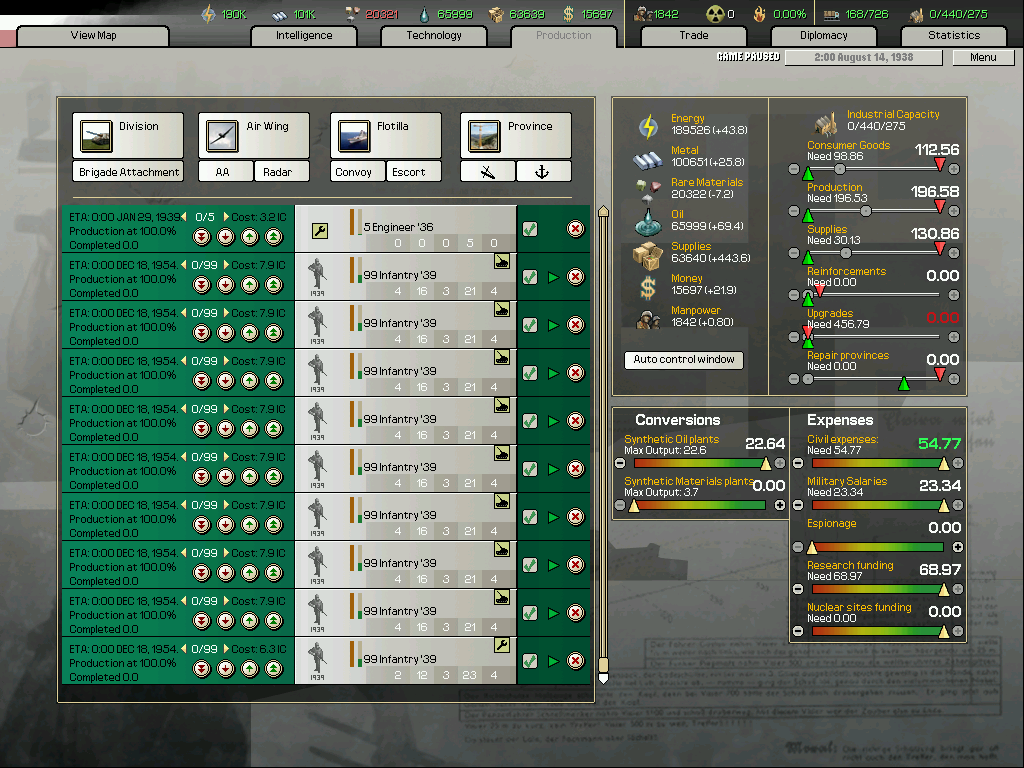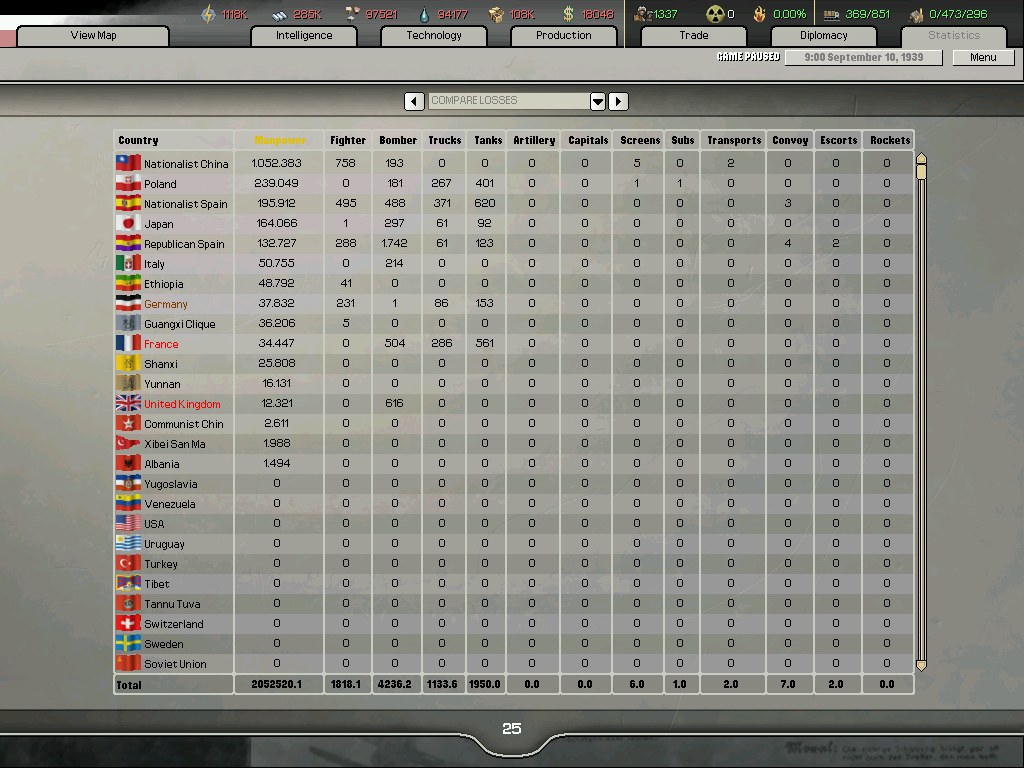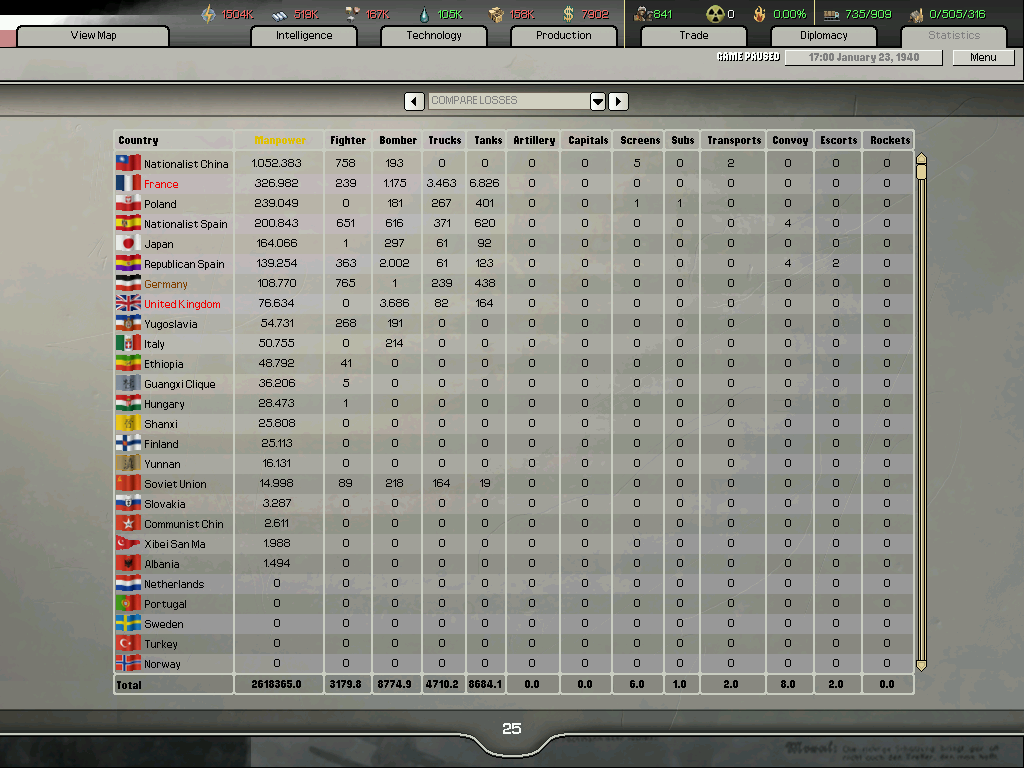This will be a gameplay AAR, and on the shorter side as far as text goes as I am too busy for long AARs. There will, however, be pictures (large ones, at that, since I won't be cropping them).
AARs will be written as I play the years in question. The game is not played in advance.
There are house rules in effect:
-Size 8 air stacks.
-No allying with any other nation
-Game is played on Normal difficulty, which is modded such that all AI nations get quadruple (+300%) IC and manpower, and quintuple (+400%) resources.
-Germany can freely move its sliders and can change ministers and ideas without dissent (waiting period still applies). Germany gets +25% research speed.
-No reloading if disasters happen (untimely Soviet DOW, successful amphibious landing, partisans destroy planes, etc).
-Germany is not allowed to build land or naval forts above level 6, though it can (and likely will on the Eastern Front) build up to that level.
-Germany may not use nuclear weapons unless nuclear weapons are used against it.
Most other strategies are on the table, though I am not a terribly careful strategist when it comes to hoi2 warfare. This AAR is obviously partly modeled on Kanitatlan's, but I would not have the time to so carefully choreograph my wars even if I had the skill for it. There will likely be mistakes
The goal of the game is to conquer everyone I can possibly conquer until I get bored or lose. I will invade Poland and France on schedule or earlier, and will aim for an ontime DOW against the Soviet Union unless major events (such as an American amphibious landing) interfere. After invading the USSR if I am still interested (and alive) I will invade America and Asia.
The plan is also to conquer Slovakia, Hungary, Yugoslavia, Bulgaria, Great Britain, Denmark, Norway, and hopefully Spain, Portugal and Italy before 1941. Vichy, Sweden, and Switzerland are possible tertiary targets if I have the forces available, though more likely they will have to wait until during the Eastern Front as there is already a lot on the German plate.
Requirements will be to build up the army or die. Aircraft take second priority, particularly interceptors and transport aircraft (bombers are not really a priority as the AI will likely build too many aircraft for offensive air superiority to be sustained). Navy is a distant third. Seelowe will have to happen with more or less the starting Kriegsmarine plus transports.
I think that's everthing! Next post will be the beginning of the AAR.
AARs will be written as I play the years in question. The game is not played in advance.
There are house rules in effect:
-Size 8 air stacks.
-No allying with any other nation
-Game is played on Normal difficulty, which is modded such that all AI nations get quadruple (+300%) IC and manpower, and quintuple (+400%) resources.
-Germany can freely move its sliders and can change ministers and ideas without dissent (waiting period still applies). Germany gets +25% research speed.
-No reloading if disasters happen (untimely Soviet DOW, successful amphibious landing, partisans destroy planes, etc).
-Germany is not allowed to build land or naval forts above level 6, though it can (and likely will on the Eastern Front) build up to that level.
-Germany may not use nuclear weapons unless nuclear weapons are used against it.
Most other strategies are on the table, though I am not a terribly careful strategist when it comes to hoi2 warfare. This AAR is obviously partly modeled on Kanitatlan's, but I would not have the time to so carefully choreograph my wars even if I had the skill for it. There will likely be mistakes
The goal of the game is to conquer everyone I can possibly conquer until I get bored or lose. I will invade Poland and France on schedule or earlier, and will aim for an ontime DOW against the Soviet Union unless major events (such as an American amphibious landing) interfere. After invading the USSR if I am still interested (and alive) I will invade America and Asia.
The plan is also to conquer Slovakia, Hungary, Yugoslavia, Bulgaria, Great Britain, Denmark, Norway, and hopefully Spain, Portugal and Italy before 1941. Vichy, Sweden, and Switzerland are possible tertiary targets if I have the forces available, though more likely they will have to wait until during the Eastern Front as there is already a lot on the German plate.
Requirements will be to build up the army or die. Aircraft take second priority, particularly interceptors and transport aircraft (bombers are not really a priority as the AI will likely build too many aircraft for offensive air superiority to be sustained). Navy is a distant third. Seelowe will have to happen with more or less the starting Kriegsmarine plus transports.
I think that's everthing! Next post will be the beginning of the AAR.
Last edited:


